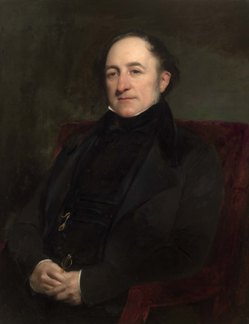 Geologist and science writer Nina Morgan* explores the trials and tribulations 18th C travel
Geologist and science writer Nina Morgan* explores the trials and tribulations 18th C travel
In April 1841, John Phillips, the nephew of William Smith who went on to become the first professor of geology at Oxford University, was working under Henry de la Beche (picture) as a field geologist for the fledgling Geological Survey of Great Britain. Even though the job kept him away from home and also required ‘foreign’ travel (in Wales!), Phillips viewed it as a potentially good career opportunity.
“Mr De la Beche has talked to me this morning a good deal, & it certainly appears that the engagement is likely or at least wished to be permanent & good.” he wrote from Tenby on 22 April 1841 to his sister Anne at their much loved home in York. But, he admitted, the accommodation – a single room “in the same house as a couple of the young Ordnance Surveyors” was less than ideal.
“Whether I shall thoroughly & entirely like it [the job opportunity], I cannot now tell,” he continued, “most probably I shall; but without some home to go to; some place for my books & instruments I shall be rather embarrassed.” The antidote for his homesickness, he believed, was for his sister to join him for the field season.
Anne must have been quick to agree to this plan because by 28 April, Phillips was writing to her to extol the virtues of a house he had taken over May and June and to advise her on travel arrangements. His letters demonstrate an encyclopaedic knowledge of transport options and timetables.
The plan was for Anne to travel to Tenby accompanied by their maid Mary, and much-adored dog, Cholo. The two-day journey involved a train to Birmingham, an Omnibus or fly to the railway station in Gloucester and a coach to Bristol. After spending the night at Ivatt’s Gloucester Hotel, Hotwells, the party was directed to proceed next day by Steamer for an 11-hour trip to Tenby, where, he writes: “…I will meet You. The landing is rather crowded but not so as to embarrass anybody but Cholo, & most likely I will get a man specially to aid your disembarkation [sic], & take your Boxes to No 2 Rock Place or whatever else your fairy home on these cliffs is called.”
Phillips also provided instructions for dealing with their copious luggage, which included his books, papers and scientific instruments as well as household necessities and clothes. “I should think if you could make up one Box of my things, or even two, & two or at most three for yourself;” he went on: “(You can pay for the excess, be sure to offer to pay for the excess, at York, letting the office know that You[ take it & are aware of its being too heavy,) you may perhaps manage. If not send my boxes to the Institution Bristol care of Mr Stutchbury by Railroad.” [Phillips’s underlining].
Anne, he implies, should travel in a first class carriage, while “as is usual” Mary, the maid, should travel 2nd class. But as for the dog, even champion trip adviser Phillips was at a loss. Writing on 30 April he admits: “How you will bring poor Cholo I do not even conjecture. Perhaps they will let him be with you in the carriage.”
If only travel websites had been invented then, Phillips’ mind could have been put at rest. The website www.nationalrail.co.uk advises that: “Passengers may take with them, free of charge … dogs, cats and other small animals (maximum two per passenger) provided they do not endanger or inconvenience passengers or staff.”
One less thing to worry about!
Acknowledgments
This vignette is based on 6 letters written by John Phillips to his sister Anne between 28 April and 1 May 1841, which are part of a series of 234 letters written by John Phillips to Anne Phillips which are held in the archives of the Hope Library at the Oxford University Museum of Natural History.
- If the past is the key to your present interests, why not join the History of Geology Group (HOGG). For more information and to read the latest HOGG Newsletter visit the new HOGG website at: www.historyofgeologygroup.co.uk where you’ll also find abstracts for the talks and posters presented at the Conference on Geological Collectors and Collecting, April 2010 available free to download as a pdf, as well as information about how to sign up for a visit to the Geological Society on 31 May 2013 to view early British and European geological maps.
*Nina Morgan is a geologist and science writer based near Oxford.